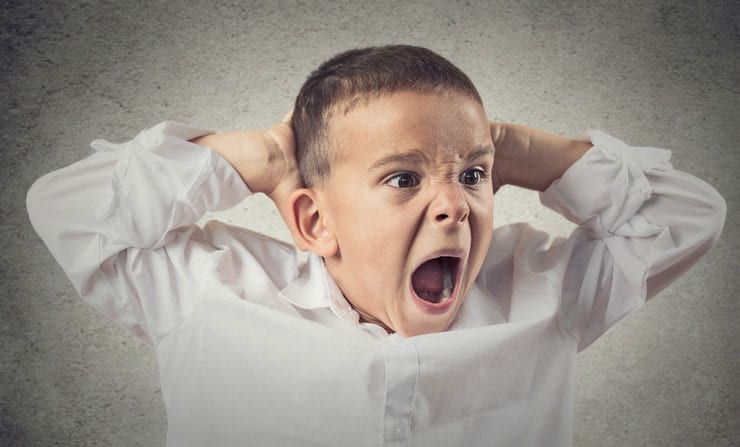Anger is an emotion. It is also a form of self-expression and sometimes a child’s way of declaring independence. Many things can trigger a child’s anger, and sometimes the result is aggression. As is often the case, biting, fighting, and temper tantrums were just around the corner. As children reach kindergarten, anger doesn’t usually explode into aggression because they’ve learned to hold back such impulsive urges through anger management. Over time, as children reach school age, parents can expect more subtle forms of attack: pouting, sulking and whining.
It may seem obvious to adults, but a young child needs to learn that anger is the name they can attach to certain feelings and the physical sensations that come with anger: a pounding heart, heavy breathing, and a sense of getting warm. You can help your child in the heat of the moment by acknowledging and naming the emotion: “I can see that you are angry right now.” They need your help in recognizing the triggers that set off these feelings, such as another child grabbing a toy or threatening to hurt them, an adult thwarting their exciting plans or seeming to punish unjustly, or their failure to reach some new goal they have set. Over time, with your help, they’ll realize that these are the kinds of situations that make them want to scream and kick.
Be an Example

Teach your child to recognize that anger management for children is an important skill to have. At the same time, you should acknowledge that it’s not easy. Managing anger takes most of us a lifetime, and it remains a work in progress. Any day’s headlines prove just how hard it is for adults to learn conflict resolution. Your child closely watches your grown-up ways of handling anger, and learns from them. Letting your child know that you’re angry about something they has done is one way to show them the consequences of their actions. When you’re mad at others, you can show them how to recognize that feeling, stop the impulse to lash out, and look for constructive solutions. When you fail to defuse your own anger, you can admit your mistake and demonstrate humility.
Asking your child to stifle such powerful feelings won’t work: The anger will dribble into unrelated situations, lead to explosions later on, or fester until it turns inward. A key to helping your child manage anger is getting them to question whether aggression really gets them what they wants.
Anger Management for Children: 5 Strategies

It is never too soon to teach your child how to control their anger so that it doesn’t control them. Remember, however, that it is difficult for young children to master these strategies. Your child will need your help—and a lot of practice:
1.Stop.
If your child feels out of control, they should be separated from the person they feel like hurting. Take them out of the the room. A parent should step in to stop them.
2.Calm down.
Teach your child to use some calming strategies when they feel the physical symptoms of anger. They can try taking deep breaths, drinking a glass of water, distracting with a song or a story, or playing alone.
3.Think before you act.
Encourage your child to ask herself, “What do I want to happen?” Explain that vengeance and retaliation are not worth bearing on. Being understood and making things right is worthwhile.
4.Consider the other person’s feelings.
Children can begin to show empathy as young as 3 years old, but they need your help. Try to get them to understand the other person’s point of view, just as they want their point of view understood. See if your child can figure out why the other person doesn’t understand their side. Could they find another way to get their view across more clearly? Can they try to let it go?
5.Look for possible solutions.
Help your child see beyond “I hate you and you’re no good.” See if you can find a compromise that both parties can agree on. Apologizing often helps. Let your child take the first step and apologize for their behavior.
When Anger Becomes Hostility

There will be times when anger turns into aggression. Use this as an opportunity to help your child master these aggressive feelings. Here’s what you can do to facilitate anger management for children:
1.Stop the action and restore safety.
It’s often necessary to isolate the fighters. Reassure both sides that they’ll be safe and that they can learn to stay in control and protect themselves.
2.Lay down the law.
Set limits and let children know who’s in charge when they’re out of control: “No hitting, and if you won’t stop it, I will.”
3.Bearing the consequences.
When a child faces the consequences of his actions, he is to learn to stop and think before he acts. If they can’t be together without hurting each other, then they can’t be together. If they want another chance to play, let them remember this.”
4.Forgive.
Tell your child terrible behavior doesn’t make them into bad people. Apologies and making amends help them move from the guilty feelings that come from knowing they were wrong to having hope that they can do better.
The Global Child Prodigy wishes you Happy Parenting.
Also read: Ten quiet games for kids.
Creative Content Writer at GCPA | Four Years of Experience in Content Writing
Feel free to contact me at Team@139.84.133.140

